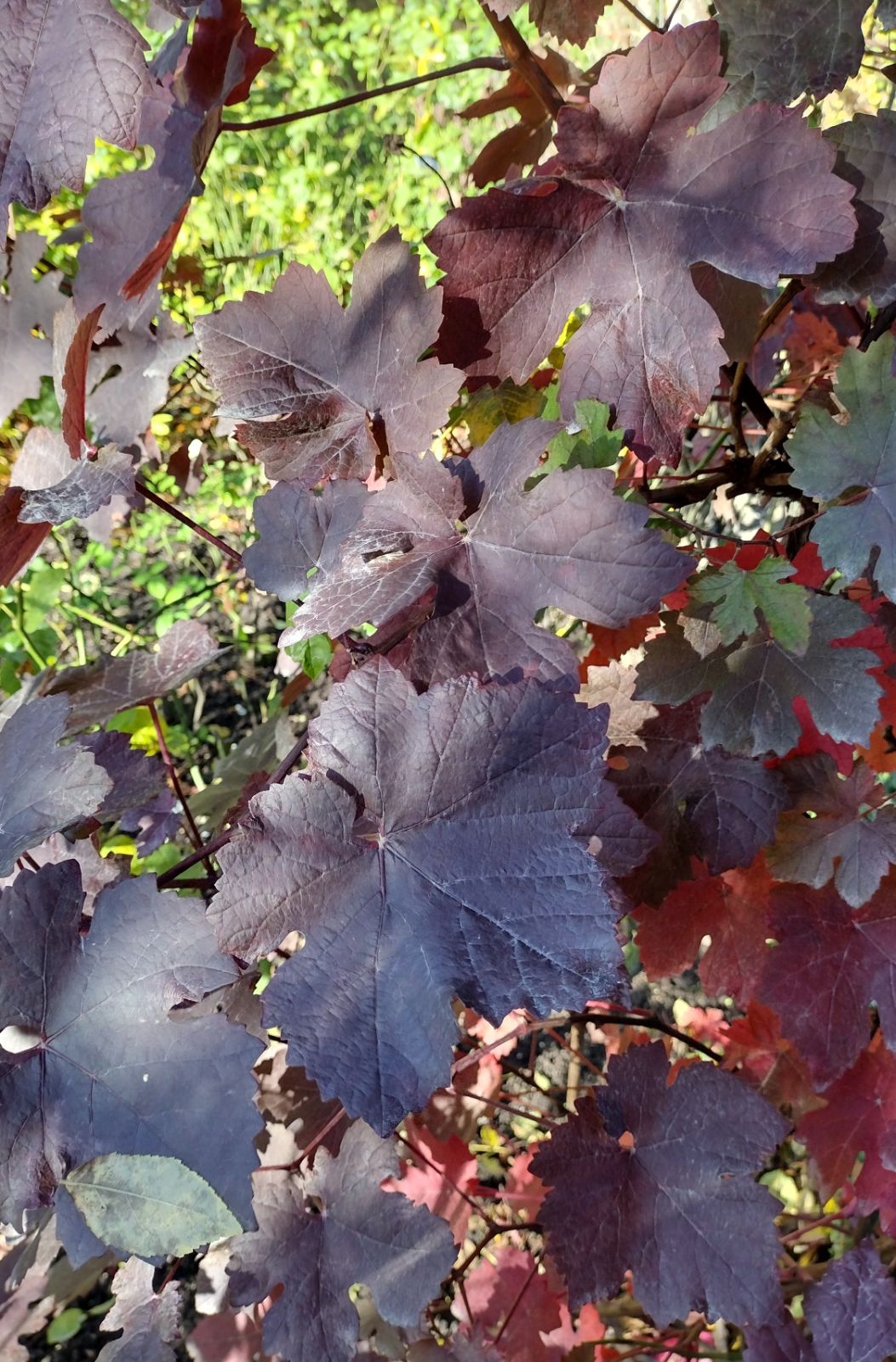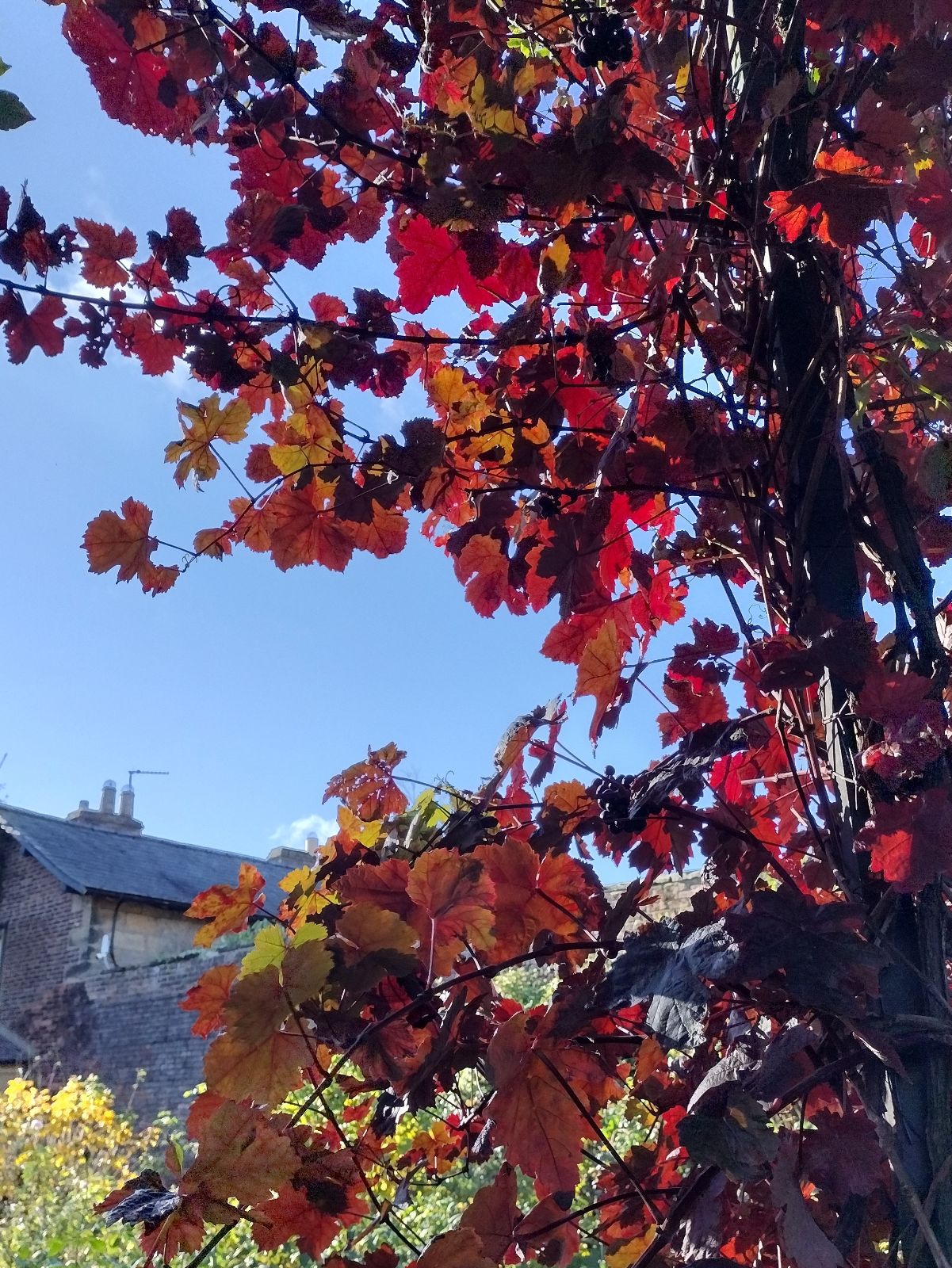Vitis vinifera
Credits
Article from Bean's Trees and Shrubs Hardy in the British Isles
Recommended citation
'Vitis vinifera' from the website Trees and Shrubs Online (treesandshrubsonline.
Genus
Common Names
- Common Grape Vine
Infraspecifics
Other taxa in genus
A deciduous climber growing to a considerable height if given support, its young shoots sometimes glabrous, sometimes cobwebby. Leaves mostly 3 to 6 in. wide and long, three- or five-lobed, variable in toothing, widely to narrowly cordate at the base (in some deeply lobed forms the sinus between the lobes is almost closed by the overlapping of their lower margins), upper surface almost glabrous at maturity, the underside hairy or woolly, rarely becoming quite glabrous. Further description is unnecessary, for V. vinifera is the common grape vine, with all its variations in size of truss and size and colouring of the grapes. The seeds are usually not more than two in number (none in some seedless sorts such as the currant grape), with a definite beak at one end.
The grape vine has been cultivated in all the warm temperate parts of Europe, and in parts of Asia back into the unrecorded past, and its really native country is now a matter of conjecture. But the general opinion is that it originated in Asia Minor and the Caucasian region. It is perfectly hardy in most parts of Britain, but needs a certain minimum of summer heat if it is to ripen its grapes. In the early middle ages the summers in northern Europe were warmer than today and the vine was widely cultivated for the making of wine. Then the summers deteriorated and the northern limit of wine-growing moved southward (and in mountainous regions downwards). Parkinson, early in the 17th century, remarked that less wine was produced than in times past and suggested ‘our unkindly yeares’ as one of the reasons. At the present time there are probably more true vineyards in England (as distinct from plantings on or with the protection of walls) than at any time since the middle ages. But the revival of English viticulture is due partly to economic factors and partly to the availability of early ripening clones.
subsp. sylvestris (Gmel.) Berger & Hegi V. sylvestris Gmel. – This is the wild grapevine, from which the cultivated sorts have evolved over the past five millennia or so, though the first stages of domestication probably took place in the eastern part of its range. It is dioecious, and generally the male plants have the leaves more deeply lobed than the female. The berries are sour, about 1⁄4 in. wide. The seeds are roundish, with a short beak, and usually three in number (in the cultivated grapevine the seeds are usually two, ovate, tapered into a longer beak). Native of southern Central and S.E. Europe, east through Asia Minor to the Caucasus, N. Iran and Turkestan. It is uncommon in Central Europe, but occurs in the valleys of the upper Rhine and upper Rhone and is of interest as one of the few lianes in the European flora, climbing high into alders, elms, willows and poplars (Hegi, Fl. Mitteleuropa, Vol. VI, pp. 364–5). It is claimed that from a study of the seeds found in prehistoric sites it is possible to determine whether the fruits were originally gathered from wild grapevines or early cultivars.
The following grapevines are cultivated for ornament:
'Apiifolia'
Common Names
Parsley Vine
Ciotat
Synonyms / alternative names
'Laciniosa'
The striking and handsomely cut leaves of this variety consist of three to five main divisions, sometimes stalked. These are again variously cut into deep narrow lobes, pointed or bluntish. It makes a very effective climber, although the leaves are certainly not subdivided enough to suggest parsley. Cultivated in Britain since the middle of the 17th century.
'Brant' ("Brandt")
See V. ‘Brant’, under V. riparia.'Incana'
Leaves three-lobed or unlobed, the upper surface as well as the lower one covered with a grey, cobweb-like down, giving them, especially when young, a whitish appearance, as if dusted with flour. Fruits black. It is uncertain whether this is the same as the old variety variously known as the Miller, Meunier or Black Cluster grape, or as Miller’s Burgundy, though this certainly had hoary leaves. This produced a moderately good fruit, which usually ripened in this country.'Purpurea'
Youngest leaves whitish with down, becoming plum-purple and darkening to rich purple in autumn. Grapes dark purple, with a harsh juice (V. vinifera purpurea Veitch, Journ. R.H.S., Vol. 28 (1903–4). This is probably the same as, or a derivative from, the old so-called Claret grape, and not the Teinturier grape, but the two seem to have been long confused. Both yielded a dark juice, that of the Teinturier being so dark that it was used to colour table wines. But the leaves of this did not colour until the fruit was ripe.
'Spetchley Red'
A selection with reddish leaves that reliably turn rich red in autumn, from Spetchley Park, Worcestershire, UK.





